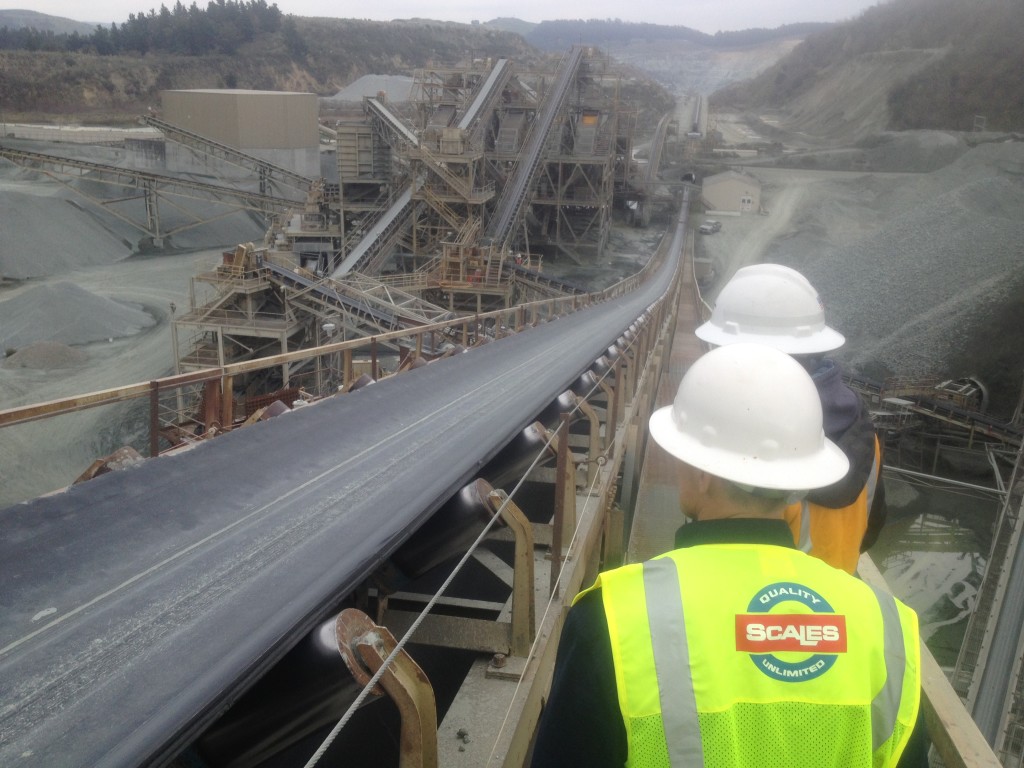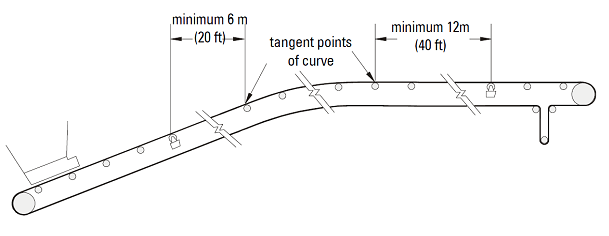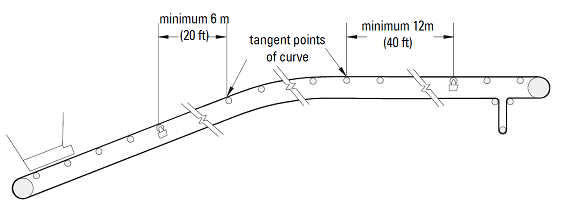
A conveyor belt scale weighs material while being carried on conveyor belts. Conveyor belt scales weigh the material and determine the rate at which material travels on a conveyor belt over a specific period of time. Since it is inefficient, labor intensive and not always possible to remove material from a conveyor belt, weigh the material, and then put the material back on the conveyor, many industries with conveyor belts, utilize belt scales to weigh their products. Conveyor belt scales are referred to by a host of names, from conveyor scales, belt scales and in-motion weighers.
Integrators are installed on conveyor belt scales to monitor the static weight signal from load cells attached to a scale idler. Once the static weight is measured, the integrator incorporates the weight with the speed at which the belt is rotating to calculate the rate of mass per time. The integrator provides continuous information about the flow of materials by monitoring the load and speed. This information is continuously displayed on the integrator for real time tracking of products.
Selecting the Best Installation Location for the Scale on the Conveyor
To attain accurate measurements and minimize any disruption in working processes, it is important to choose a suitable location for the installation of a conveyor belt scale. Below are a few tips to help you select the best location for installing a conveyor belt scale:
- Choose an area with constant belt tension
When deciding to install a conveyor belt scale, constant belt tension plays a key role. For optimal accuracy of the scale, the tension must remain constant to avoid inaccurate measurements. The tension of the belt acts as a force on the scale, and hence needs to be factored out during calibration. It is best to install the scale close to the tail section where tension variations from no load to full load are minimal.
If tension is a continuing problem with your conveyor belt, you may want to invest in a “tensioning device”. There are three types of tension devices so it is best to check with the manufacturer for the best device for your conveyor.
- Never install a belt scale near the materials loading point
The loading point of materials will generally be turbulent and installing a conveyor belt scale near the loading point can lead to poor performance and accuracy. Do not attempt to weigh materials before they completely settle. Determine the distance of belt length between the loading point and the point which the belt becomes settled for selecting the location of the scale. Installation of the scale around the head pulley or the tail pulley of the conveyor belt can produce the similar problems. Ideally a scale should be installed at least one conveyor idler away from the point where turbulence stops.
- A steep incline is a poor location choice
When a conveyor belt is at an angle of more the 15 degrees, the chances of material roll back increases greatly. A belt scale installed on a steep incline can be weighing the materials multiple times if material roll back is occurring. (If roll back of material is happening and your scale in not installed on an angle greater than 15 degrees, there may be an inequality between material feed velocity and belt speed.)
- Avoid locations where the conveyor forms a convex or concave curve
Locations where the conveyor belt forms either a convex or a concave curve make for an inappropriate belt scale installation point. This could give rise to problems such as a belt lifting up from the curve preventing a good empty belt zero balance for the scale. Ideally a scale should be located 20 feet away from the tangent points of a convex curve and 40 feet from the tangent points of a concave curve.
- Consider vibration & weather
A belt scale is an inherently sensitive device and should be isolated from equipment that can induce harmful or disturbing vibration. Equipment such as crusher, vibratory feeding equipment, bins subject to hammering and hammer mills should be avoided.
Weather conditions with temperatures below -20 degrees C can cause ice and frost build-up on the belt which creates unreliable speed sensing. It is also recommended your conveyor belt scale is in a covered area for outdoor installations.
concave

convex

Conveyor belt scales act as flexible weighing systems for many businesses because they allow for easy and efficient in-motion weighing. Selecting the best location for your belt scale is crucial because your decision will have a huge impact on output, ease of production and your bottom line.
Quality Scales Unlimited specializes in sales and service of heavy capacity weighing equipment, including conveyor belt scales. QSU offers a selection of conveyor belt from a variety of quality manufacturers. Contact the sales team for more information on conveyor belt scales tailored to your business and budget needs.




